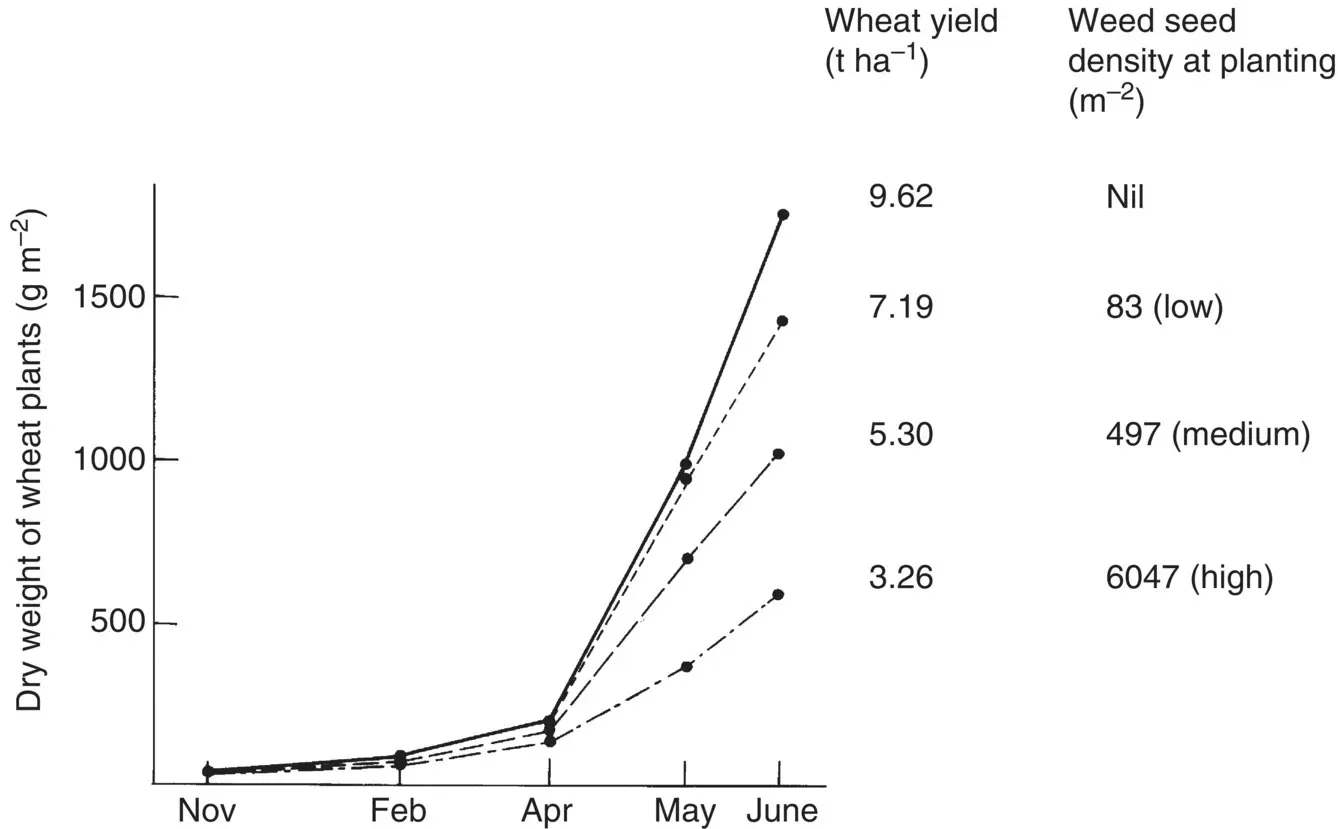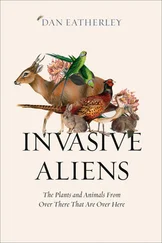Andrew H. Cobb - Herbicides and Plant Physiology
Здесь есть возможность читать онлайн «Andrew H. Cobb - Herbicides and Plant Physiology» — ознакомительный отрывок электронной книги совершенно бесплатно, а после прочтения отрывка купить полную версию. В некоторых случаях можно слушать аудио, скачать через торрент в формате fb2 и присутствует краткое содержание. Жанр: unrecognised, на английском языке. Описание произведения, (предисловие) а так же отзывы посетителей доступны на портале библиотеки ЛибКат.
- Название:Herbicides and Plant Physiology
- Автор:
- Жанр:
- Год:неизвестен
- ISBN:нет данных
- Рейтинг книги:5 / 5. Голосов: 1
-
Избранное:Добавить в избранное
- Отзывы:
-
Ваша оценка:
- 100
- 1
- 2
- 3
- 4
- 5
Herbicides and Plant Physiology: краткое содержание, описание и аннотация
Предлагаем к чтению аннотацию, описание, краткое содержание или предисловие (зависит от того, что написал сам автор книги «Herbicides and Plant Physiology»). Если вы не нашли необходимую информацию о книге — напишите в комментариях, мы постараемся отыскать её.
Discover the latest developments in herbicide and weed biology Herbicides and Plant Physiology,
Arabidopsis
Herbicides and Plant Physiology
Herbicides and Plant Physiology — читать онлайн ознакомительный отрывок
Ниже представлен текст книги, разбитый по страницам. Система сохранения места последней прочитанной страницы, позволяет с удобством читать онлайн бесплатно книгу «Herbicides and Plant Physiology», без необходимости каждый раз заново искать на чём Вы остановились. Поставьте закладку, и сможете в любой момент перейти на страницу, на которой закончили чтение.
Интервал:
Закладка:
Not all weeds classified as competitive ruderals are annuals. The exceptions are the herbaceous perennials, which have a high capacity for vegetative growth and include many of the most important weeds in the world. The vegetative production of new individuals can often be a very successful means of weed establishment. This is because the vegetative structures can rely on the parent plant for nutrients, which can confer a competitive advantage, especially at the start of the growth season. There are, however, disadvantages to vegetative reproduction. The principal ones are that since daughter plants are genetically identical to their parents, they may not be well adapted to a changing environment and that widespread dispersal cannot occur by vegetative means alone, unlike with seeds. The vegetative structures themselves include stolons, rhizomes, tubers, bulbs, corms, roots and turions.
Stolons are long, slender stems that grow along the soil surface to produce adventitious roots and shoots; examples include the perennial bermuda grass ( Cynodon dactylon ), the annual crabgrass ( Digitaria sanguinalis ) and creeping buttercup ( Ranunculus repens ). Rhizomes are underground stems from which adventitious roots and shoots arise. Major examples include the perennials Johnson grass ( Sorghum halepense ), couch grass ( Elytrigia repens ), perennial sedges such as purple and yellow nutsedge ( Cyperus rotundus and C. esculentus ) and ground elder ( Aegopodium podagraria ). Purple nutsedge ( Cyperus rotundus ) has an extensive underground system of rhizomes and tubers. The rhizomes can penetrate and pass completely through vegetable root crops, and the tubers can remain dormant and carry the plant through very extreme conditions of drought, flooding or lack of aeration. Cyperus rotundus is a major weed of tropical and warm temperate regions of sugar cane, rice, cotton, maize and vegetables, groundnuts, soybeans and sorghum. Japanese knotweed ( Fallopia japonica ), a highly invasive weed that has become a particular problem in many parts of the world, propagates largely by means of rhizomes (both locally and in moved soil; Figueroa, 1989), as colonies rarely result from seed.
Tubers are enlarged terminal portions of rhizomes that possess storage tissues and axillary buds. Examples include the perennial sedges mentioned above, Jerusalem artichoke ( Helianthus tuberosus ) and the common white potato ( Solanum tuberosum ). Another particularly troublesome weed that produces tubers is the horsetail ( Equisetum arvense ). In this case, aerial shoots can be easily controlled, but deep‐seated tubers will produce new shoots when conditions permit.
Bulbs are also underground organs that are modified buds surrounded by scale leaves, which contain the stored nutrients for growth, an example being wild onion ( Allium vineale ). Corms are swollen, vertical underground stems covered by leaf bases, for example, bulbous buttercup ( Ranunculus bulbosus ).
Many species produce long, creeping horizontal roots that give rise to new individuals, including perennial sow thistle ( Sonchus arvensis ), field bindweed ( C. arvensis ) and creeping or Canada thistle ( Cirsium arvense ). Some biennials and perennials form swollen, non‐creeping taproots capable of regenerating whole plants. Common examples are dandelion ( Taraxacum officinale ) and curled and broad‐leaved docks ( Rumex crispus and R. obtusifolius ). Several aquatic weeds produce vegetative buds or turions that have specialised nutrient‐storing leaves or scales. These separate from the parent plant in unfavourable conditions, or are released after the decay of the parent, to remain dormant until favourable conditions return. Examples include Canadian pondweed ( Elodea canadensis ) and Ceratophyllum demersum .
Cultivation and soil disturbance will promote the fragmentation of all these vegetative structures. Propagation will then occur when the vegetative structure is separated from the parent plant. The brittleness of leafy parts ensures that although leaves may be removed manually or by grazing, the means of vegetative reproduction remains in the soil. Only continuous cultivation will prevent the accumulation of stored nutrient reserves and so control these weeds.
1.6 A few examples of problem weeds
Black‐grass ( Alopecurus myosuroides ) is of widespread distribution in Europe, temperate Asia, North America and Australia, and has become a major problem weed where winter cereals are planted and reduced cultivation methods employed. In winter cereals about 80% of black‐grass seedling emergence occurs from August to November, so crop and weed emergence coincide. The weed shows similar growth rates to the crop over the winter period, but is most aggressive from April to June with substantial grain losses being reported ( Figure 1.5).
Black‐grass flowers from May to August and is cross‐pollinated. Seeds have short dormancy and viability (3% viable after 3 years), so ploughing, crop rotation or spring sowing will remove the problem.
Bracken ( Pteridium aquilinum ) is a widespread, poisonous perennial weed of upland pastures and is found throughout the temperate regions of the world. This fern is thought to occupy between 3500 and 7000 km 2in the UK alone, and may be spreading at 4% each year. It is difficult to control because of rhizomes that may grow up to 6 m away from the parent plant and are capable of rapid growth from underground apices and buds. The rhizome contains a starch reserve which acts as an energy reserve for the developing frond canopy. Translocated herbicides need to be repeatedly used if all rhizome buds are to be killed. Consequently, bracken is capable of rapid canopy establishment and is an aggressive coloniser of new areas. Indeed, some plants are estimated to be over 1000 years old. Other features that contribute to the success of this weed are its mycorrhizal roots, that ensure efficient nutrient uptake, especially in phosphate‐deficient soils, and a potential production of 300 million spores per plant, which can remain viable for many years if kept dry.

Figure 1.5 Effect of black‐grass density on the growth and yield of winter wheat.
Source: Moss, S.R. (1987) Competition between blackgrass ( Alopecurus myosuroides ) and winter wheat. British Crop Protection Conference. Weeds 2, 367–374.
Bracken creates a profound shading effect, suppressing underlying flora and gradually eliminating grass growth. Bracken also contains various carcinogens and mutagens, and is therefore poisonous to both humans and grazing animals. In addition, bracken may provide a haven for sheep ticks, which can transfer numerous sheep and grouse diseases.
Cleavers ( G. aparine ) is considered by many to be the most aggressive weed of winter cereals. It is of ubiquitous occurrence in hedgerows, and has become most invasive in cereals and oilseed rape. Its climbing and scrambling habit allows it to rapidly outgrow the crop to form a dense weed canopy, eventually causing severe lodging, interference with harvesting procedures, large yield losses and severe crop contamination.
There is nowadays an increasingly widespread occurrence of crop species in succeeding crops when sown in rotation. These ‘volunteer’ crops include potatoes, cereals, oilseed rape and sugar beet.
Potato ‘ground keepers’ are usually small tubers that are missed by the harvesters, although some are derived from true seeds. They can last several seasons, and pose a particular problem in subsequent pea and bean crops where they can only be eliminated by hand rogueing. They also pose a considerable threat to the health and certification of subsequent potato crops since they can carry over pests and virus infections.
Читать дальшеИнтервал:
Закладка:
Похожие книги на «Herbicides and Plant Physiology»
Представляем Вашему вниманию похожие книги на «Herbicides and Plant Physiology» списком для выбора. Мы отобрали схожую по названию и смыслу литературу в надежде предоставить читателям больше вариантов отыскать новые, интересные, ещё непрочитанные произведения.
Обсуждение, отзывы о книге «Herbicides and Plant Physiology» и просто собственные мнения читателей. Оставьте ваши комментарии, напишите, что Вы думаете о произведении, его смысле или главных героях. Укажите что конкретно понравилось, а что нет, и почему Вы так считаете.











